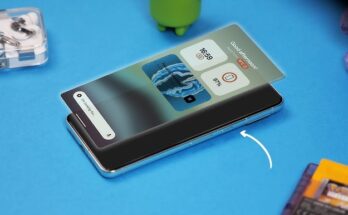Introduction
In the digital age, where user attention spans are shrinking, the need for clean and intuitive user interface (UI) design has never been more critical. A Clean UI app prioritizes simplicity, clarity, and consistency, providing users with a seamless and enjoyable experience. Let’s delve deeper into what makes a Clean UI app stand out and explore some of the best examples in the market.
Characteristics of a Clean UI App
Simplicity
Simplicity is the cornerstone of a Clean UI app. It focuses on decluttering the interface, eliminating unnecessary elements, and presenting information in a straightforward manner.
Clarity
A Clean UI ensures that every element on the screen serves a purpose and is easily understandable to the user. Clear labels, intuitive icons, and concise instructions contribute to clarity.
Consistency
Consistency in design elements, such as color schemes, typography, and navigation patterns, enhances the user’s ability to predict interactions and reduces cognitive load.
Minimalism
Minimalism in design promotes a less-is-more approach, where only essential elements are included, leading to a cleaner and more visually appealing interface.
Benefits of Using Clean UI Apps
Enhanced User Experience
Clean UI design leads to a more enjoyable and frictionless user experience, resulting in higher user satisfaction and retention rates.
Improved User Engagement
By removing distractions and focusing on core functionalities, Clean UI apps encourage users to engage more deeply with the content.
Faster Learning Curve
The simplicity and clarity of a Clean UI reduce the time users need to familiarize themselves with the app, leading to quicker onboarding and increased usage.
Reduced Cognitive Load
A clutter-free interface minimizes cognitive load, allowing users to focus on their tasks without feeling overwhelmed by unnecessary information.
Examples of Best Clean UI Apps
Instagram’s minimalist design puts the spotlight on visual content, with clean lines, simple icons, and intuitive navigation, making it easy for users to explore and interact with posts.
Google Maps
Google Maps’ clean interface prioritizes essential information, such as maps and directions, while offering advanced features like real-time traffic updates and street view in an unobtrusive manner.
Dropbox
Dropbox’s UI design focuses on simplicity and functionality, allowing users to seamlessly upload, organize, and share files across devices with minimal effort.
Evernote
Evernote’s clean and intuitive interface makes note-taking and organization a breeze, with features like tags, notebooks, and search functionality readily accessible.
Design Principles for Creating a Clean UI App
Use of White Space
White space, or negative space, helps in reducing visual clutter and emphasizing essential elements, enhancing readability and user focus.
Intuitive Navigation
Intuitive navigation ensures that users can easily find what they’re looking for, with clear menu structures and consistent placement of navigation elements.
Consistent Typography
Consistent typography improves readability and maintains visual harmony across different screens and devices, enhancing the overall user experience.
Visual Hierarchy
A clear visual hierarchy guides users’ attention to the most important elements on the screen, facilitating easier navigation and decision-making.
Tips for Developing a Clean UI App
User-Centric Approach
Prioritize user needs and preferences throughout the design process, incorporating feedback and conducting usability testing to ensure a user-friendly experience.
Regular Testing and Feedback
Iteratively test the app with real users to identify pain points and areas for improvement, refining the design based on feedback to optimize usability.
Iterative Design Process
Adopt an iterative design approach, continuously refining and iterating on the UI based on user feedback and evolving design trends.
Collaboration between Designers and Developers
Foster collaboration between designers and developers to ensure that the final product not only looks great but also functions seamlessly across different devices and platforms.
Challenges in Implementing Clean UI
Balancing Aesthetics and Functionality
Achieving a balance between aesthetics and functionality can be challenging, as adding too many design elements can clutter the UI, while stripping it down too much may sacrifice usability.
Ensuring Compatibility with Different Devices
Designing a Clean UI that works well across various devices and screen sizes requires careful consideration of responsive design principles and platform-specific guidelines.
Dealing with Complex Data Structures
Apps with complex data structures, such as productivity tools or enterprise software, may struggle to maintain a clean UI while providing access to all necessary features and information.
Tools and Resources for Designing Clean UI
Sketch
Sketch is a popular design tool for creating clean and modern interfaces, with features like artboards, symbols, and plugins to streamline the design process.
Adobe XD
Adobe XD offers a comprehensive set of tools for designing and prototyping clean UIs, with features like repeat grid, auto-animate, and cloud collaboration for seamless workflow.
Figma
Figma is a collaborative interface design tool that allows multiple team members to work on the same project simultaneously, making it ideal for creating clean UIs in a team environment.
InVision
InVision is a prototyping and collaboration platform that enables designers to create interactive mockups and gather feedback from stakeholders, facilitating the design iteration process.
Future Trends in Clean UI Design
Adoption of Dark Mode
Dark mode, with its reduced eye strain and improved battery life benefits, is becoming increasingly popular and is expected to be a standard feature in Clean UI design.
Integration of Micro-Interactions
Micro-interactions, such as animated button effects or subtle feedback animations, add a layer of delight to the user experience, enhancing engagement and usability.
Personalized User Experiences
Personalization features, such as tailored content recommendations or customizable interface settings, allow users to tailor the app to their preferences, enhancing user satisfaction.
Accessibility-focused Design
Ensuring that the app is accessible to users with disabilities, through features like screen reader compatibility and keyboard navigation, is a growing focus in Clean UI design.
Conclusion
In conclusion, a Clean UI app is characterized by simplicity, clarity, and consistency, providing users with an intuitive and enjoyable experience. By adhering to design principles, incorporating user feedback, and staying abreast of emerging trends, developers can create Clean UIs that elevate user experience to new heights.get




